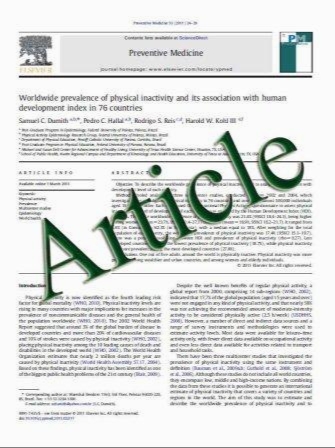Abnormal Small Intestinal Permeability in Patients with Idiopathic Malabsorption in Tropics (Tropical Sprue) Does Not Change Even After Successful Treatment
- نوع فایل : کتاب
- زبان : انگلیسی
- مؤلف : Sunil Kumar Uday C. Ghoshal Kamaiah Jayalakshmi Raja Roy Asha Misra C. L. Khetrapal
- چاپ و سال / کشور: 2010
Description
Background Though tropical sprue (TS) is common in tropics, studies on small intestinal permeability (SIP) in TS are scant. Method SIP was evaluated using 1H nuclear magnetic resonance (NMR) spectroscopy of urinary lactulose and mannitol in 24 patients with TS (22 before and 15 after treatment with tetracycline and folate) and in 31 healthy subjects (HS). Effect of treatment of TS on SIP and its relationship with outcome were studied. Result Subjects were comparable in terms of age and gender. Before treatment, urinary lactulose (0.24 mmol, 0–1.09 mmol versus 0.09 mmol, 0–0.68 mmol, P = 0.02) and lactulose-to-mannitol (L/M) ratio (0.11, 0–0.41 versus 0.042, 0–0.26, P = 0.001) were higher in TS than in HS, though mannitol was comparable (2.7 mmol, 0.61– 10.5 mmol versus 3.8 mmol, 1.3–16.4 mmol, P = 0.08). Patients improved after treatment [stool frequency (9, 4–20/day versus 1, 1–2/day, P\0.0001), weight (44.4, 32– 69 kg, versus 56, 39–84 kg, P\0.0001), fecal fat (10.1, 6–26 g/24 h versus 4.4, 3.0–6.7 g/24 h, P\0.0001), D-xylose (0.57, 0.28–1.2 g/5 g/5 h versus 1.1, 0.2–2.1 g/5 g/5 h, P\0.0001), and small intestinal bacterial overgrowth (SIBO) resolved in 10/24 (41.7%) versus 1/15 (6.6%), P = 0.02]. Though urinary lactulose (0.17, 0–4.3 mmol versus 0.09, 0–0.68 mmol, P = 0.11) and mannitol (2.17, 0.8–36.7 mmol versus 3.84, 1.3–16.4 mmol, P = 0.06) were comparable, L/M ratio was higher in TS than in HS (0.09, 0–0.22 versus 0.042, 0–0.26, P = 0.002). L/M ratio was more often abnormal (cutoff 0.078) in TS than in HS [14/22 (63.6%) versus 3/31 (9.7%); P = 0.0001], which persisted even after treatment [9/15 (60%) as compared with HS; P = 0.0006]. Persistently abnormal SIP was associated with less weight gain and frequent stools following treatment. Conclusion SIP is often abnormal in TS and remains unchanged even after successful treatment that was associated with less weight gain and more frequent stool.
Dig Dis Sci (2011) 56:161–169 DOI 10.1007/s10620-010-1232-3 Received: 23 December 2009 / Accepted: 25 March 2010 / Published online: 22 April 2010


